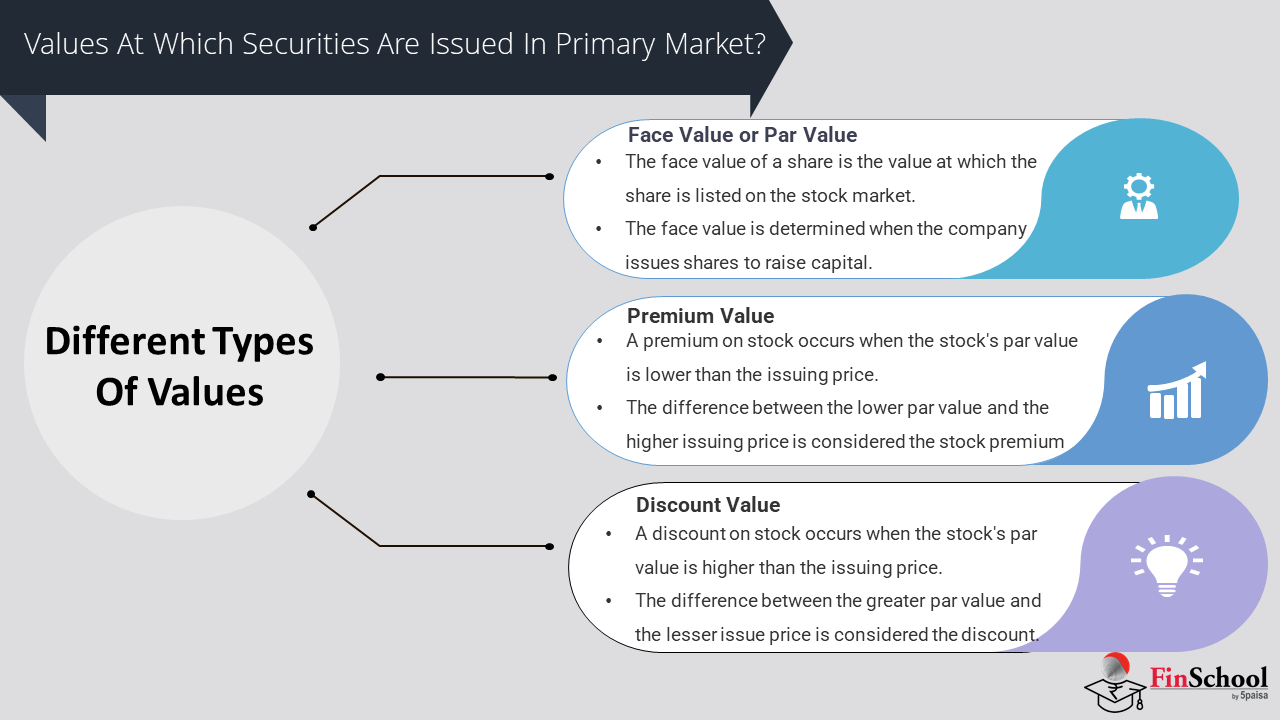- Study
- Slides
- Videos
6.1. Key Components of Dow Theory
The Dow Theory is a foundational principle of technical analysis in finance, named after Charles Dow, the founder of Dow Jones & Company, and co-founder of The Wall Street Journal. Developed in the late 19th century, the Dow Theory outlines key principles for analyzing and interpreting stock market trends. While it has evolved over time, its core tenets remain influential in market analysis.
- Market Trends: The Dow Theory asserts that markets move in three primary trends:
- Primary Trend: This is the overarching long-term trend, lasting for months to years, which reflects the general direction of the market. Identifying the primary trend is crucial for investors seeking to align their investment strategies with the prevailing market direction.
- Secondary Trend: This trend represents the intermediate corrections or rallies within the primary trend. These corrections typically last from a few weeks to several months and provide opportunities for traders to capitalize on short- to medium-term price movements.
- Minor Trend: The minor trend consists of short-term fluctuations in the market, which may last from a few days to a few weeks. While less significant than the primary and secondary trends, minor trends can still impact short-term trading strategies.
- Market Confirmation: The Dow Theory emphasizes the importance of confirming signals across multiple market indices. Specifically, it suggests that significant market movements should be corroborated by similar movements in related indices. For example, in the context of U.S. markets, movements in the Dow Jones Industrial Average (DJIA) should ideally be confirmed by movements in the Dow Jones Transportation Average (DJTA). Consistent movements in both indices lend greater credibility to the prevailing trend.
- Volume Analysis: Volume is considered a crucial indicator in Dow Theory analysis. It asserts that price movements accompanied by high trading volumes are more significant than those with low volumes. For instance, an increase in prices accompanied by high trading volume suggests strong buying interest, reinforcing the bullish sentiment. Conversely, a decrease in prices coupled with high trading volume signals heightened selling pressure, indicating a bearish sentiment.
- Non-Confirmation Signals: The Dow Theory also pays attention to non-confirmation signals, where one average makes new highs or lows not confirmed by the other average. This can signal potential trend reversals or weaknesses in the current trend.
Overall, the Dow Theory provides a comprehensive framework for understanding market dynamics and making informed investment decisions. While it’s not a predictive tool, it helps investors and traders interpret market movements within the context of broader trends and market sentiment.
6.2 Importance of Dow Theory
The Dow Theory holds significant importance in the field of technical analysis and market interpretation for several reasons:
- Historical Significance: Developed by Charles Dow in the late 19th century, the Dow Theory represents one of the earliest systematic attempts to analyze and understand stock market behavior. Its enduring relevance over more than a century underscores its importance and influence in shaping modern technical analysis.
- Foundation of Technical Analysis: The Dow Theory laid the groundwork for many principles and concepts in technical analysis that are widely used today. It introduced the idea of analyzing market trends and identifying patterns to forecast future price movements, forming the basis of many other technical indicators and strategies.
- Identification of Market Trends: By categorizing market movements into primary, secondary, and minor trends, the Dow Theory helps investors and traders identify the prevailing direction of the market. Understanding the primary trend is crucial for aligning investment strategies and managing risk effectively.
- Confirmation Signals: The emphasis on confirmation signals, particularly between the Dow Jones Industrial Average (DJIA) and the Dow Jones Transportation Average (DJTA), provides a method for validating the strength and sustainability of market trends. Consistent movements in both indices lend credibility to the prevailing trend, enhancing confidence in decision-making.
- Volume Analysis: The Dow Theory’s incorporation of volume analysis acknowledges the importance of trading volume in assessing the significance of price movements. High volume accompanying price changes reinforces the conviction behind those moves, while low volume may signal lackluster market participation and potential reversals.
- Non-Confirmation Signals: Non-confirmation signals, where one average makes new highs or lows not confirmed by the other average, serve as early warning signs of potential trend reversals or weaknesses. This aspect of the Dow Theory encourages traders to remain vigilant and adapt their strategies in response to changing market conditions.
- Practical Application: Despite its age, the Dow Theory remains relevant in modern markets and is widely used by traders and investors to analyze stocks, indices, commodities, and other financial instruments. Its principles provide a framework for understanding market dynamics and making informed decisions, contributing to improved trading performance and risk management.
6.3. Characteristics of Dow Market
Dow Theory encompasses several key characteristics that define its approach to analysing financial markets. These characteristics include:
Trend Analysis: Dow Theory places significant emphasis on identifying and analysing market trends. It recognizes three main trends: primary, secondary, and minor fluctuations. Traders use trend analysis to determine the overall direction of the market and adjust their trading strategies accordingly.
Market Discounts Everything: According to Dow Theory, all relevant information, including fundamental data, market sentiment, and news events, is already reflected in market prices. Therefore, price movements are considered to be a comprehensive reflection of all available information.
Confirmation: Dow Theory emphasizes the importance of confirmation between different market indices or averages. For example, if one index reaches a new high or low, other relevant indices should ideally confirm this movement. Confirmation provides greater reliability in assessing the strength and direction of a trend.
Volume Confirmation: Volume analysis is another key characteristic of Dow Theory. It suggests that volume should confirm the direction of the primary trend. Rising volume during uptrends and declining volume during downtrends are considered signs of market strength. Volume analysis helps traders gauge the level of participation and conviction behind price movements.
Trends Persist Until Reversal Signals: Dow Theory suggests that trends tend to persist until there is a clear and definitive signal that the trend has reversed. Traders should avoid prematurely assuming that a trend has ended and instead wait for confirmation signals before changing their position. This characteristic underscores the importance of patience and discipline in trading.
Market Averages: Dow Theory often refers to market averages, such as the Dow Jones Industrial Average (DJIA) and the Dow Jones Transportation Average (DJTA), to analyse market trends and confirm signals. These averages are considered representative of broad market movements and are used to validate trend analysis and signals.
Intermarket Analysis: While not explicitly outlined in Dow Theory’s original principles, modern interpretations often incorporate intermarket analysis. This involves analysing relationships between different asset classes, such as stocks, bonds, commodities, and currencies, to gain insights into broader market trends and potential opportunities.
By incorporating these characteristics into their analysis, traders can apply Dow Theory principles to interpret market movements, identify trends, and make informed trading decisions. However, it’s essential to recognize that Dow Theory, like any trading methodology, has its limitations and may not always accurately predict market behaviour. Therefore, traders often combine Dow Theory with other technical indicators and risk management strategies to enhance their trading approach.
6.4 Dow Theory Trading Strategy
Dow Theory is a foundational concept in technical analysis and provides a framework for understanding market trends. Developed by Charles H. Dow, the co-founder of Dow Jones & Company, Dow Theory is based on six key tenets. Here’s a detailed look at the Dow Theory Trading Strategy:
Core Principles of Dow Theory
Market Discounts Everything:
- All available information, including news, earnings reports, and economic data, is already reflected in stock prices. This principle implies that price movements are the result of current and future expectations.
Three Types of Market Trends:
- Primary Trend: This is the major trend lasting from several months to several years, representing the overall direction of the market (bullish or bearish).
- Secondary Trend: These are intermediate corrections or reactions lasting from a few weeks to several months, moving against the primary trend.
- Minor Trend: Short-term movements lasting from a few days to a few weeks, often influenced by day-to-day news and market sentiment.
Three Phases of Primary Trends:
- Accumulation Phase: In a bull market, informed investors start buying stocks quietly, anticipating a positive shift.
- Public Participation Phase: As market sentiment improves, more investors join in, driving prices up significantly.
- Excess Phase: Optimism peaks, and speculation is rampant, often leading to overvaluation and eventually a market correction.
For a bear market, these phases are reversed: distribution, public participation, and panic phases.
The Averages Must Confirm Each Other:
- For a trend to be valid, both the Dow Jones Industrial Average (DJIA) and the Dow Jones Transportation Average (DJTA) must move in the same direction. If one average confirms a new high (or low) while the other does not, the trend is not confirmed.
Volume Confirms the Trend:
- In a bull market, higher volume should accompany rising prices, while in a bear market, higher volume should accompany falling prices.
A Trend Remains in Effect Until a Clear Reversal Occurs:
- Primary trends continue despite minor fluctuations. A trend is considered in place until there are clear signals of reversal, typically identified by significant price movements against the prevailing trend.
6.5 Applying Dow Theory to Trading
To implement a Dow Theory trading strategy, follow these steps:
- Identify the Primary Trend:
Determine if the market is in a bullish or bearish primary trend by analyzing long-term charts (monthly or weekly).
- Confirm the Trend with Averages:
Ensure that both the DJIA and DJTA confirm the identified trend. Look for synchronized movements in both averages to validate the trend.
- Monitor Secondary Trends for Entry/Exit Points:
Use secondary trends to time your entries and exits. For instance, in a primary bull market, look for corrections as buying opportunities. In a primary bear market, look for rallies as selling opportunities.
- Use Volume Analysis:
Pay attention to volume patterns to confirm price movements. Increased volume during price advances in a bull market or price declines in a bear market strengthens the trend’s validity.
- Look for Reversal Signals:
Stay vigilant for signs of trend reversals, such as divergence between the averages, weakening volume trends, or significant price movements against the primary trend.
6.6 Example of a Dow Theory Trade
- Primary Trend Identification:
- Suppose the DJIA has been making higher highs and higher lows for several months, indicating a bullish primary trend.
- Averages Confirmation:
- The DJTA is also making higher highs and higher lows, confirming the bullish trend.
- Entry Point:
- Wait for a secondary correction (a pullback) within the primary bull market. When the DJIA and DJTA both show signs of bottoming out after the pullback, enter a long position.
4. Volume Confirmation:
- Ensure that the volume increases as the market resumes its upward movement after the correction.
- Exit Strategy:
- Monitor the market for signs of a trend reversal. If the DJIA or DJTA starts making lower lows and lower highs, consider exiting your position. Decreasing volume during upward movements could also be a signal to be cautious.
- By adhering to these principles and steps, traders can use Dow Theory to make informed trading decisions based on the broader market trends.
6.7 Dow Theory-Its Impact on Global Markets
Dow Theory has had a significant impact on global markets, influencing the way traders and investors analyse and interpret market trends. Some key impacts of Dow Theory on global markets include:
- Foundation for Technical Analysis: Dow Theory laid the groundwork for technical analysis as a discipline. Its principles, such as trend analysis and market confirmation, form the basis for many technical indicators and strategies used by traders worldwide. Technical analysis is widely employed across various financial markets, including stocks, currencies, commodities, and indices.
- Market Sentiment and Psychology: Dow Theory’s emphasis on market trends and the psychology of market participants has shaped how traders understand and interpret market sentiment. Traders often use Dow Theory principles to gauge the overall mood of the market, identify potential trend reversals, and anticipate market movements based on investor sentiment.
- Global Market Indices: Dow Theory’s focus on market averages, such as the Dow Jones Industrial Average (DJIA) and the Dow Jones Transportation Average (DJTA), has influenced the development and use of global market indices. These indices serve as benchmarks for measuring the performance of stock markets around the world and are closely monitored by investors, analysts, and policymakers.
- Intermarket Analysis: While not explicitly outlined in Dow Theory’s original principles, the concept of intermarket analysis—analysing relationships between different asset classes—has become increasingly important in global markets. Traders use intermarket analysis to gain insights into broader market trends, correlations between asset classes, and potential trading opportunities.
- Risk Management and Trading Strategies: Dow Theory’s principles of trend persistence and confirmation play a crucial role in risk management and trading strategies. Traders often use Dow Theory to identify trends, confirm signals, and manage risk by adjusting their positions based on market conditions. Dow Theory principles are incorporated into various trading methodologies, including trend-following strategies, momentum trading, and swing trading approaches.
- Cross-Market Influence: Dow Theory’s influence extends beyond individual markets and has implications for global market interconnectivity. Trends and signals identified using Dow Theory principles in one market can impact trading decisions and sentiment across other markets, leading to correlations and spill over effects between different asset classes and regions.
Overall, Dow Theory has had a profound and lasting impact on global markets, shaping the way traders analyse trends, interpret market signals, and make trading decisions. While the theory was developed over a century ago, its principles remain relevant and widely used by traders and investors worldwide.
6.8 Dow Theory and Scalping
Dow Theory, while primarily focused on identifying long-term trends in the market, can also be relevant for scalping strategies, albeit with some adaptations. Here’s how Dow Theory can intersect with scalping:
- Identifying Primary Trends: Even for scalpers, it’s essential to have an understanding of the broader market direction. While scalping typically focuses on short-term movements, having context about the primary trend from Dow Theory can help scalpers choose their positions wisely. For example, scalpers may prioritize trading in the direction of the primary trend to increase the probability of success.
- Confirming Short-Term Signals: Dow Theory’s principles of confirmation can be applied to short-term signals in scalping. Scalpers can use multiple indicators or signals to confirm their entry and exit points, increasing their confidence in the trade. For instance, a scalper might use a combination of price action, volume analysis, and momentum indicators to validate a scalp trade setup.
- Managing Risk: Dow Theory emphasizes the importance of managing risk and waiting for confirmation signals before assuming a trend reversal. Scalpers can apply this principle by setting tight stop-loss orders and adhering to strict risk management rules. Dow Theory’s emphasis on trend persistence can also remind scalpers not to hastily exit a position at the first sign of a minor pullback, but to wait for confirmation of a trend reversal.
- Volume Confirmation: While scalping typically involves quick trades over short time frames, volume analysis can still be valuable. Scalpers can use volume to confirm the strength of price movements, validate breakouts or breakdowns, and assess the level of market participation. For example, a scalp trade with increasing volume might indicate stronger conviction behind the move, potentially increasing the likelihood of success.
- Adapting to Market Conditions: Dow Theory encourages traders to adapt to changing market conditions. Scalpers can apply this principle by adjusting their strategies based on current market dynamics. For instance, in choppy or range-bound markets, scalpers might reduce position sizes or avoid trading altogether until clearer trends emerge.
Key Takeaways
- While Dow Theory was not originally designed for scalping, its principles can still be valuable for scalpers when adapted to shorter time frames and rapid trading strategies.
- By incorporating elements of Dow Theory into their scalping approach, traders can gain a broader perspective on market trends, improve their trade confirmation process, and better manage risk in fast-paced trading environments.
- Traders often use Dow Theory principles to gauge the overall mood of the market, identify potential trend reversals, and anticipate market movements based on investor sentiment.


















